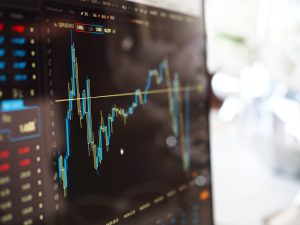The foreign exchange market, or forex, is the largest and most liquid financial market in the world. Traders and investors engage in this market to capitalize on the fluctuations in currency values. Predicting these movements requires a deep understanding of various analytical techniques and a keen eye for market trends. This article delves into the essential aspects of forex market analysis and provides insights into predicting currency movements like a pro.
Understanding Forex Market Analysis

Forex market analysis involves examining the factors that affect currency prices to predict future movements. There are three primary types of analysis used in the forex market: fundamental analysis, technical analysis, and sentiment analysis.
Fundamental Analysis
Fundamental analysis focuses on economic, social, and political forces that influence currency prices. Key indicators include:
- Economic Data: GDP growth rates, employment data, and inflation rates.
- Central Bank Policies: Interest rates, quantitative easing measures, and monetary policy statements.
- Political Events: Elections, policy changes, and geopolitical tensions.
By evaluating these factors, traders can assess the overall health and direction of an economy, which in turn affects its currency.
Technical Analysis
Technical analysis involves studying historical price data and using charts and indicators to forecast future price movements. Common tools include:
- Price Charts: Line, bar, and candlestick charts.
- Technical Indicators: Moving averages, Relative Strength Index (RSI), and Bollinger Bands.
- Chart Patterns: Head and shoulders, triangles, and double tops/bottoms.
Technical analysis helps traders identify trends and potential reversal points, providing actionable insights based on historical price behavior.
Sentiment Analysis
Sentiment analysis gauges the mood and attitudes of market participants. It involves:
- Market Sentiment Indicators: Commitment of Traders (COT) reports, sentiment surveys.
- News and Social Media: Monitoring financial news and social media platforms for prevailing market opinions.
By understanding the market’s sentiment, traders can predict potential market movements driven by collective behavior.
Combining Analytical Techniques
To predict currency movements like a pro, traders often combine fundamental, technical, and sentiment analysis. This holistic approach provides a comprehensive view of the market, allowing for more accurate predictions.
Analysis Table
The following table summarizes the key aspects of each type of analysis:
| Analysis Type | Key Focus | Tools and Indicators | Example Indicators |
|---|---|---|---|
| Fundamental | Economic, social, political | GDP, interest rates, inflation, employment | Federal Reserve interest rate decision |
| Technical | Historical price data | Price charts, moving averages, RSI, patterns | 50-day Moving Average, RSI overbought/oversold |
| Sentiment | Market mood and attitudes | COT reports, sentiment surveys, news analysis | Bullish/Bearish sentiment on social media |
Comparative Analysis: Fundamental vs. Technical vs. Sentiment
To better understand the strengths and weaknesses of each analysis type, let’s compare them:
| Aspect | Fundamental Analysis | Technical Analysis | Sentiment Analysis |
|---|---|---|---|
| Timeframe | Medium to long-term | Short to medium-term | Short-term |
| Data Sources | Economic reports, central bank releases | Historical price data, chart patterns | Market sentiment indicators, news |
| Market Impact | High impact due to major economic changes | Immediate impact based on price movements | Can lead to sudden market shifts |
| Skill Requirement | Requires understanding of macroeconomics | Requires knowledge of charting techniques | Requires ability to gauge market mood |
| Predictive Power | Strong for long-term trends | Strong for identifying entry/exit points | Strong for short-term market reactions |
| Typical Users | Long-term investors, economists | Day traders, technical analysts | Short-term traders, sentiment analysts |
Practical Application: Case Study
Let’s apply these analyses to a hypothetical scenario involving the USD/EUR currency pair.
Fundamental Analysis Case
Suppose the U.S. Federal Reserve announces an unexpected interest rate hike due to rising inflation. This action typically strengthens the USD because higher interest rates attract foreign capital seeking higher returns. Consequently, traders anticipating this move would expect the USD to appreciate against the EUR.
Technical Analysis Case
Assume the USD/EUR chart shows a head and shoulders pattern forming, which is a bearish reversal signal. Traders would use this pattern to predict a potential decline in the USD/EUR pair, indicating that the EUR may strengthen relative to the USD.
Sentiment Analysis Case
Imagine the COT report shows a significant increase in bullish positions for the EUR. Coupled with positive economic news from the Eurozone, this sentiment analysis suggests a growing market belief in the EUR’s strength, prompting traders to anticipate an appreciation in the EUR against the USD.
Integrating Analyses for Better Predictions
To achieve professional-level predictions, traders often integrate these analyses. For example, if the fundamental analysis suggests a stronger USD due to an interest rate hike, but technical analysis shows a bearish pattern, traders might be cautious and wait for further confirmation from sentiment indicators. This integrated approach helps mitigate risks and improves the accuracy of predictions.
Conclusion
Predicting currency movements in the forex market requires a multi-faceted approach. By mastering fundamental, technical, and sentiment analysis, traders can gain a comprehensive understanding of the market and make informed decisions. Combining these techniques allows for more accurate predictions and better trading outcomes. Whether you are a novice or an experienced trader, honing these analytical skills is crucial to navigating the dynamic world of forex trading like a pro.












